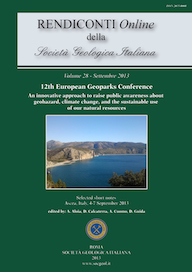
Using synthetic DNA tracers in environmental waters: effect of filtering
Jan Willem Foppen (*) & Thom Bogaard (**)
(*) UNESCO-IHE Institute for Water Education, P.O. Box 3015, 2601 DA Delft, The Netherlands. E-mail: j.foppen@unesco-ihe.org
(**) Delft University of Technology, Water Resources Section, Delft, The Netherlands.
Volume: 28/2013
Pages: 70-73
Abstract
Tracer injection experiments are popular for characterizing flowpaths in complex areas, like karstic limestone. Recently, we started to use synthetic DNA as a tracer to determine flow paths (Foppen et al., 2011). However, development of the synthetic DNA tracer injection methodology is still on-going. In this research, we looked at the effect of filtering on the synthetic DNA tracer yield. Thereto, we carried out one synthetic DNA tracer injection experiment in the Heuwelerbach, Luxembourg, and we tested the effect of filtering prior to sample taking on synthetic DNA tracer concentrations. Our results indicated that unfiltered samples gave best synthetic DNA yields, followed by cellulose-acetate syringe filters and then glass fibre syringe filters. During injection experiments with synthetic DNA, it is best to take samples unfiltered. The value of the experiment we carried out was in improving the protocol for using synthetic DNA tracers in environmental applications. The potential of using synthetic DNA is in the maximum dilution factor, which can be as high as 1020, higher than any dilution factor encountered in environmental hydrology. In addition, synthetic DNA can be prepared in any base composition, and this creates the possibility to produce an infinite number of different tracers.
Keywords
Get Full Text